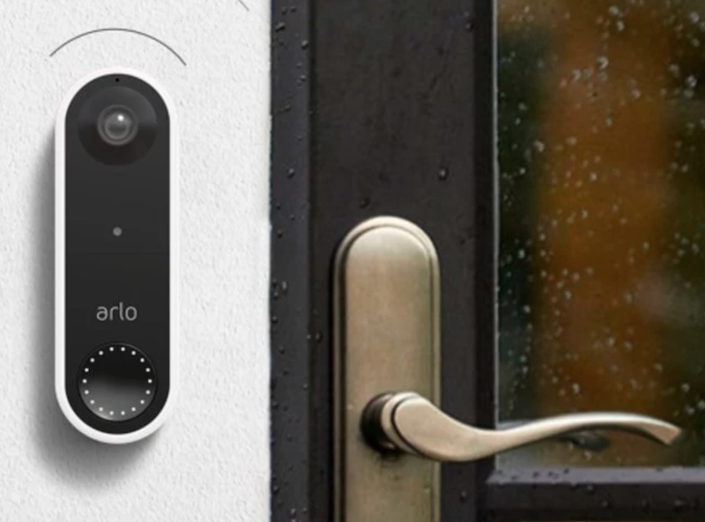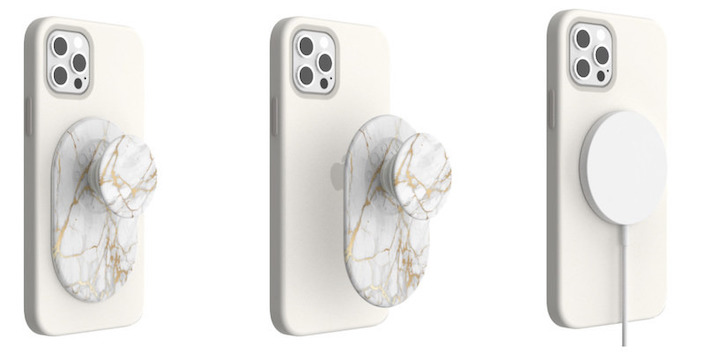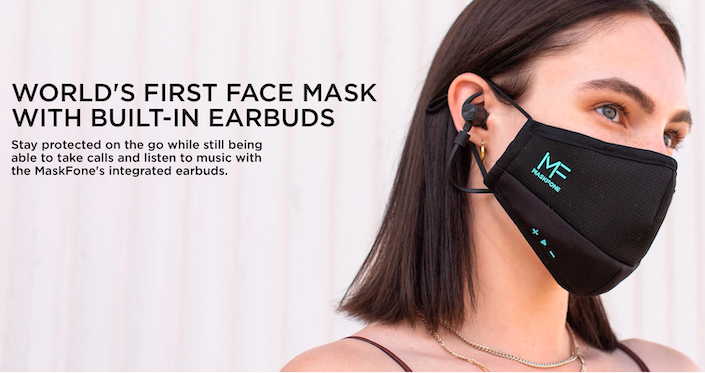CES. It's the consumer electronics show, an event that started 54 years ago in 1967, and normally it sees nearly 200,000 people descend upon Las Vegas in the second week of January each year, has gone fully digital in the age of COVID-19 and a still largely unvaccinated world.
It comes after Christmas each year, and so showcases technologies that didn't make it in time for the previous Christmas sales season, showcases technologies that will come out later in the year, and is also a way for companies to see which technologies look like they'll be hot, or not.
So, what is some of the tech that's on display?
Well, let's start with smartphones.
|
|
Their screens are getting bigger and wider, and while we've seen folding phones go from concept to being on sale at JB Hi-Fi, Harvey Norman and elsewhere, the next big thing is "rollable" phones.
This is where the screen rolls up inside the phone and at the press of an onscreen button can smoothly and almost magically scroll out to go from phone size to tablet size - without any creases or thick phones. Search online for vision of the LG and the TCL rollable phones to see these concepts in action, with LG's phone due to actually launch later this year - it could kill folding phones dead.
Touchless technology: video doorbells and fridge doors
Another gadget comes from Arlo, the company behind the world's most popular wireless security cameras. One of its new products is its "Touchless Video Doorbell" which adds to its existing lineup of video doorbells.
It leverages "precise Proximity Sensing Technology" to gauge a visitor’s distance and then zeros in on a visitor’s approach. Once detected, the guest hears an audible chime and sees a visible light, signalling the doorbell has been “pressed” and the homeowner has been alerted – all before they come into physical contact with the device.
In the era of COVID-19, the Touchless Video Doorbell was designed to help guests and delivery personnel limit their interaction with communal points of contact, all while keeping the homeowner’s front entry secure.

Giant TVs
Then when we get to giant TVs, the latest is Samsung's 110-inch 4K TV that will sell for US $150,000, and uses Micro-LED technology is similar to OLED TVs where each pixel emits its own light source, but promises a brighter light from each pixel. To counter this, LG has a new OLED technology called EVO, which promises 20% more brightness from each OLED pixel, so the race for televisual supremacy continues.
Samsung is launching a fridge in the colour pink, because it can, as part of its new "bespoke" range that lets you mix and match colours, materials and finishes on the doors of the fridge, but LG's new InstaView fridge has not only offered a see through glass door that has a UV-C light to disinfect the water in the in-door water dispenser - and you can even ask the fridge to open its door with your voice - no touching required!
Robots coming to a smart home near you - see video below:
Samsung unveiled some home robots, the most interesting of which is one called Bot Handy. It's billed as an 'extra hand in your home', and uses AI to understand objects like a glass cup or ceramic plate.
It can pour you a glass of wine as it uses AI to learn how to hold objects and how much pressure to apply, so it doesn't crush your wine bottle or wine glass in some Terminator style of frenzy.
It can move around, set the table, put away groceries, and is billed as flipping the script on what a robot can do in your home.
No doubt this ultra advanced yet clearly quite primitive version of Rosie the Robot from the Jetsons will be expensive - but if it's cheaper than regular cleaners or hiring a maid - it could start to make financial sense, and future models should become much more advanced over the next decade.
Another Samsung Robot is called Bot Care, and it reminds you to take a break, knows your schedule, can display video calls on its screen and almost looks as if it could be like your own R2D2 unit, but instead of R2's holographic projector, it has a big tablet sized screen.
There are also robots from LG and others that can roam around offices and classrooms with several large UV-C lights that are as long as those office fluorescent lights, and these can disinfect those rooms when people aren't there.
You don't want to be there when they're cleaning though - UV-C light is dangerous to skin and eyes, and no-one wants to be Terminated that way.
Of course there are also robot vacuum cleaners that can use their camera to act as home security systems, and Samsung has one of these, too.
The next robot was around before CES 2021, where it has been shown off again, but there's a robot called Qoobo which is billed as a tailed cushion that "heals your heart", and it looks like a bit like the body and tail of c cat, but without a head or legs, which sounds terrifying in one sense.
Anyway it's said to be a therapeutic robot and when you pat and caress it, the tail waves gently, and when you rub this electronic pet, the tail swings playfully, and sometimes it just wags its tail to say hello.
You feed it by recharging it, so no need for tins of cat food, and thankfully it doesn't leave little piles of batteries all over the house.
COVID-19 and next gen face masks
Then we get to COVID-19 masks, which have gone high tech. We already heard about touchless video doorbells and fridge doors that can open with your voice, but the AirPop Active+ mask has a sensor that is meant to measure your breathing data and the quality of the air you're breathing, while filtering the air and protecting you from pollutants, viruses and bacteria. This would have been very handy in Canberra a year ago.
Another mask called Maskfone adds wireless earbuds and a microphone, connected via Bluetooth, while also being an N95 filter, making it easier to make and take calls while wearing a mask, and of course it has hidden controls so you can play, pause and skip through music, podcasts or whatever digital media you're listening to.
Gaming company Razer has a prototype mask that lights up in up to 16 million different colours, because gamers love having their computers do that, and it has a voice amplifier which I guess is very handy when your mask is muffling your voice.
Wearable displays
While the world is waiting for Apple to launch its Augmented Reality glasses that will places images in front of your eyes overlaid against actual reality, to show you arrows to navigate streets and malls, along with apps, video calls and other snippets of information, phone and TV company TCL has what looks like a relatively normal pair of glasses - unlike all those bulky VR headsets - and it projects what looks like a 140-inch image four metres in front of your eyes in 1080P quality. It's set to arrive in late 2021.

TCL MoveTrack Pet GPS tracker
TCL is also bringing a GPS tracker for your pet later this year. It attaches to your pet's collar, and has 14 days of battery life. It's a bit large, so it's more for dogs than cats
Whether you'll remember to charge it once every two weeks is yet to be seen, but it can display a QR code so people can scan that and know who the pet belongs to, where you'll also no doubt see a flat battery notification, as well as being notified through the app using Wi-Fi.
A "virtual leash" function using Bluetooth, so if your pet leaves a defined area, you'll get a notification.
It's due to arrive globally next spring.
![]()
Samsung solar-powered remote control
One of the things you'll see with new Samsung TVs this year is a remote control that not only charges up using a USB-C cable, so it charges up like your phone, but when it is face down, it has a solar panel on the back that recharges the battery too.
In theory, you'll never need to charge the remote again, unless you never have the back panel facing upwards or you keep the remote in a dark theatre room.

MagSafe compatible PopSocket grip for iPhone 12
If you love PopSockets like I do, they let you hold phones large or small securely in your hand. I don't like to use phones without them, they're kind of like the wrist strap from Walkmans and Nokias of old.
The thing is, if you use an iPhone 12 like me, or future phones that will copy the magnetic back of an iPhone 12, then using a Popsocket gets it the way of both wireless chargers and Apple's own MagSafe charger.
So, the PopSockets people have come up with a MagSafe compatible Popsocket back, as well as a PopWallet which combines space to store your credit cards - appropriately shielded from the magnetism - along with a PopSocket to hold your phone securely - which you can then easily remove so you can charge your phone wirelessly with ease.
They'll arrive in the Australian Autumn and US Spring, and I'll definitely be buying one ASAP!

This is just a tiny slice of the tech on offer - just go to your favourite search engine, type in CES 2021, and you'll find millions of articles with plenty of info and videos to feast your eyes upon - and sometime during 2021, your heart, mind and wallet, too.












































